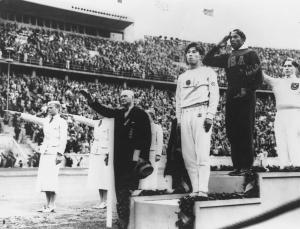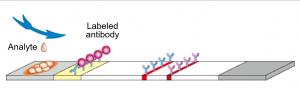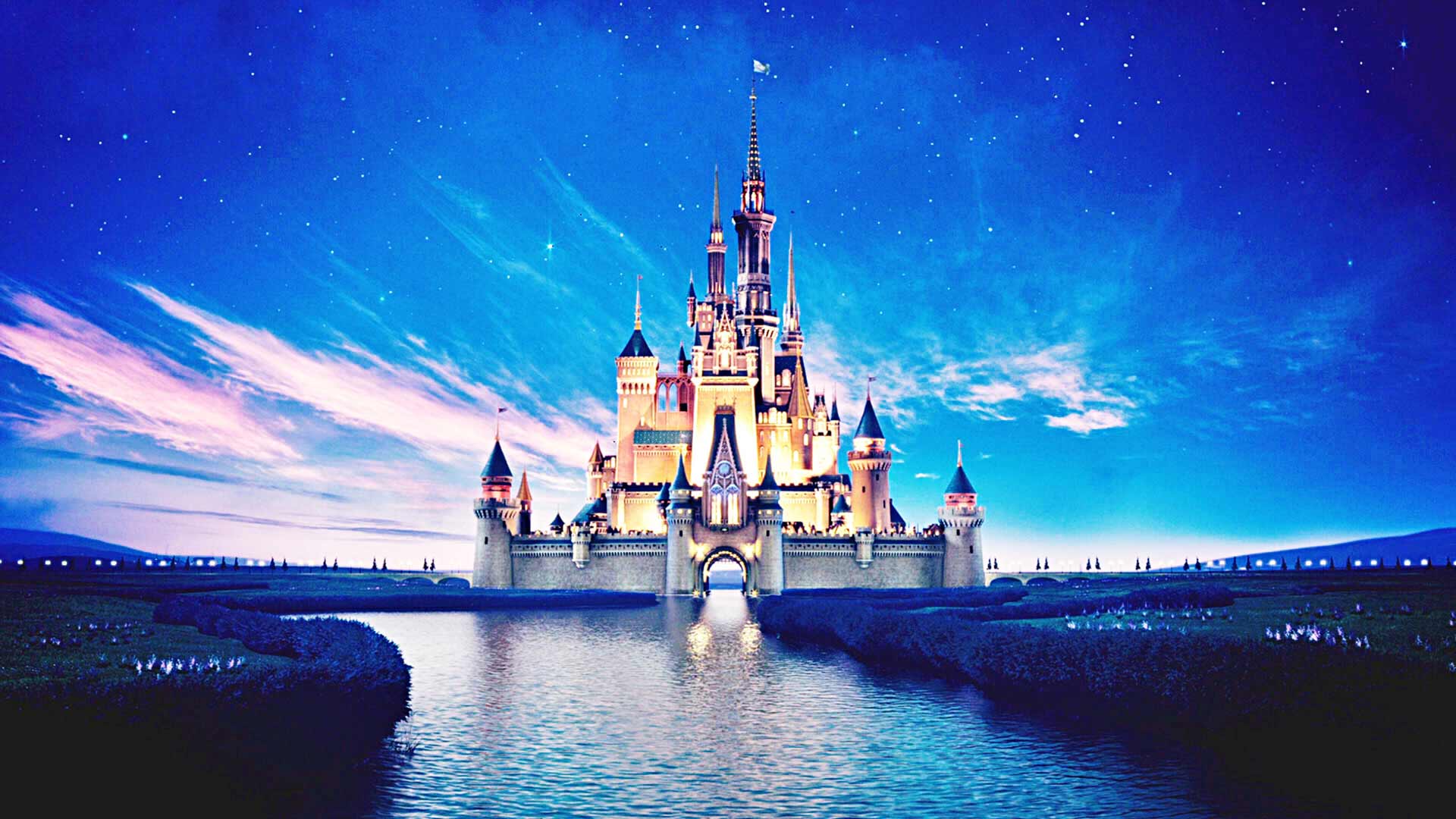 |
Sleeping Beauty Castle
Anyone who doesn't like Disney’s cartoons would still know that the image above is the symbol of The Walt Disney Company. Even young children may first come up with Disneyland if they look at it. Yes, as you know, this castle represented the dreams and fantasies of children for decades. However, it was based on a certain castle in Bavaria, Germany in the late-19th century. Have you ever heard of Neuschwanstein Castle, which was the primary inspiration for the Disney Castle? Or about the misfortunate king who built it? The king also was a boy of dreams. But what differentiate a him from others was that he realized his dreams. He constructed his dreamland into real architecture. He lived there alone, but not for too long. The topic of this issue is Ludwig II of Bavaria, the romantic King, and his dreamlike palaces.
Young Prince Ludwig II grew up in Hohenschwangau Castle, which sits high above Lake Alpsee, in the mountains of southern Bavaria. His family spent much of their years living there. Hohenschwangau Castle was built in the 1830s by King Maximilian II, Ludwig’s father. Maximilian decorated the walls of the castle with scenes of German myths and legends. The walls were painted with the images of medieval life like knights, castles and ancient chivalry. In such an environment, the child Ludwig fed his imagination.
More than any other room, the Hall of the Swan Knight captivated the boy. It was about the story of Lohengrin, which was also called “Knight of the Swan”, found in German a medieval tale. Lohengrin was a knight of the Holy Grail, sent in a boat pulled by a single white swan to save a damsel. As the swan symbolizes a hero and appears everywhere throughout the castle, Ludwig came to identify with it strongly in his mind. He began to imagine that when he grew up, he would be the ‘Swan King’.
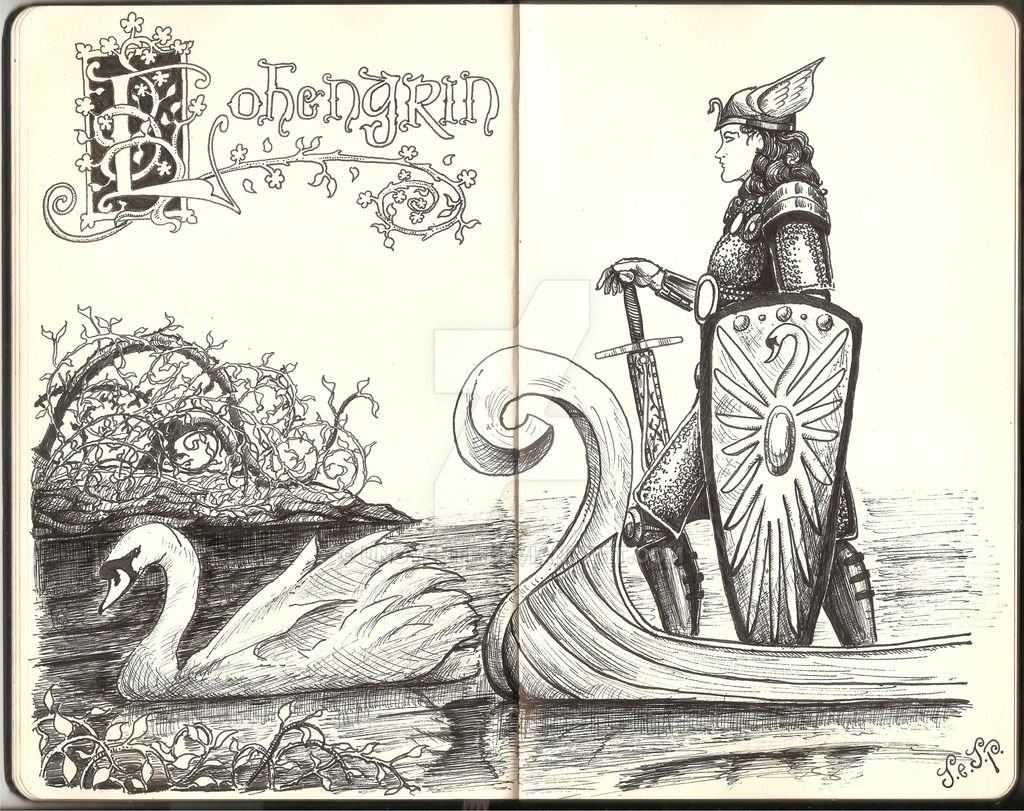 |
Lohengrin, Swan Knight Legend
On March 10 1864, Ludwig became the King of Bavaria. He was crowned at the Royal Palace in the heart of the Bavarian capital, Munich. He was just 18 years old, a shy young man and not greatly interested in the affairs of state. He was much more interested in the things that happened in the magnificent building within a stone's throw from the royal residence. It was a place where he could lose himself in the stories and legends he adored. Munich's theater and opera house were a spectacular places of magic and escapism for Ludwig.
In the 19th century, Richard Wagner was the man who would take opera to new romantic heights. Even as a boy, Ludwig had been following the great composer, Wagner.
Three years before he became King, Ludwig attended a performance of Wagner's Lohengrin in the Munich State Theatre. At that point, his experience that night transformed from admiration into fanatical devotion. One of Ludwig's first actions on becoming King was to invite Wagner to dinner. For Ludwig, Wagner's operas were magical experiences. They transported him to the worlds of beauty, myth, legend an romance.
 |
Neuschwanstein Castle
Soon, he commanded his own private performances to enjoy the music in solitude, but eventually even that was not enough. He started to build his own Wagnerian stage sets, images taken straight from German legend.
Construction of the palace began in 1869 and continued for almost two decades, employing between 200 to 300 workers per day. It drew artists, artisans and craftsmen from all over Europe. The result was a pure architectural theater. It assumed the shape of a medieval knight's castle in the Romanesque and Gothic vision. The courtyard is based on Wagner's instructions for a stage set of his opera,-Lohengrin. When Ludwig needed detailed drawings, he didn't turn to architects, but to a set designer, Christian Jank. He was who had worked with Wagner at the Court Theater on an early performance of Lohengrin.
Hall of the Singers, the largest room of Neuschwanstein, was decorated with themes from Lohengrin, which was one of Ludwig's greatest inspirations in the castle. However, this medieval style feasting room was never designed for court festivities. Rather, it served as a private music hall in which Wagner's operas could be sung.
The whole palace was only for Ludwig’s private satisfaction. This castle is nothing more than appearance. It seemed that Ludwig didn't care too much about authentic medieval construction. That is because above the throne room lies the structural reality, like behind the stage set of a theater. Behind the ceiling of the Romanesque detail, there is an utterly modern, pragmatic world, that comes to the forefront. The central dome of the throne room is supported by a sort of iron lattice, which holds up the dome itself, which is made of concrete. So, there exists an ironic relation. Classical beauty below, is sustained by modern industrial construction.
In 1866, Ludwig and Bavaria had suffered a humiliation. Ludwig had been obliged to pick one side when two Germanic countries, Austria and Prussia went to battle. Unfortunately, he backed the wrong horse. Feeling more sympathy for their fellow Cat holics, Ludwig and Bavaria had sided with Austria. But the conflict, known as the Seven Weeks War, ended with Prussian victory.Both his kingdom and Ludwig’s position had been weakened very quickly.
Ludwig became increasingly reclusive as he spent more and more of his time, money and energy on architecture. If Neuschwanstein was a castle for a Swan King, then what he needed was a royal villa for his country retreat and he knew just the place to build it. Ludwig had inherited a small hunting lodge just 15 miles into the mountains from Neuschwanstein. He turned his attention to transforming the hunting lodge into a royal palace, a refuge deep in the secluded woods.
Compared to Neuschwanstein, this palatial villa was utterly different in architectural style and in scale.If the former was like a fairy-tale tower, for this mini palace, Ludwig preferred to build it in the Baroque -Classical manner of 18th-century France. Actually this change in style was deliberate for Ludwig. In the real world, he was a King empowered by his ministers and the military might of Prussia. But in his imagination, he was a powerful monarch, a king ruling by Divine right. In fact someone would have noticed an absolute monarch, French King Louis XIV was the inspiration behind the theme of this country palace, Linderhof.
Almost every room in Linderhof speaks of power and kingship through beauty but the most visually dramatic room in the palace is the Hall of Mirrors. As it was known that Ludwig used to sleep in the daytime and stay awake in the night, Ludwig would come into this mirror room to read alone at night. Standing between the two mirrors, Ludwig might have seen an endless vista of rooms stretching to infinity. But in fact, it was nothing but just a figment of his imagination.
The gardens became Ludwig's playground, where he achieved gratification through the construction of buildings that were little more than stage sets. Venus Grotto is just an example. This wholly artificial space is for Wagner's opera, Tannhauser. A vast stone looking barrier, is incredibly a door, made of plaster. Grotto is the ultimate theater realizing the world of Wagner's Tannhauser. There is a floating boat on the artificial lake, and on the back wall, is a painted scene from the opera. It is a perfectly designed stage set for Ludwig’s pleasure, escape and fantasy. You can imagine him sitting in the boat, escaping from reality, in this incredible world he had created, a world of pure imagination.
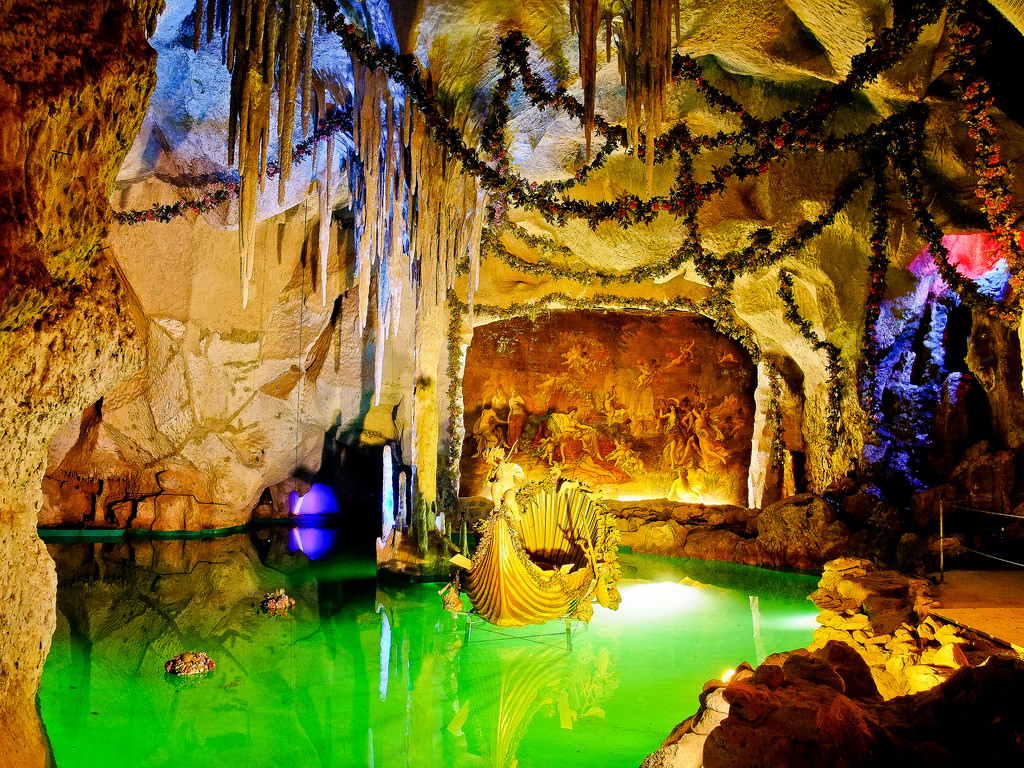 |
Venus Grotto and Lake
The dramatic effect of the grotto was enhanced by the use of pioneering technology. Generators were installed to power lights behind colored glass disks, which created a changing light show for the king. Ludwig applied new technology anytime for the sake of the perfect illusion.
In 1870, Prussia went to war with France. It was part of a strategy to unite the Germanic states.Ludwig had no option but to join the war on the Prussian side. The war ended with Prussian victory, and it confirmed Prussia as the dominant state in the united Germany, and at the same time, confirmed Ludwig as a puppet monarch. Ludwig signed away Bavarian sovereignty to Prussia in a document, known as the Kaiser Brief.
On January 18th 1871, the Prussian King Wilhelm I was crowned in the Hall of Mirrors, at the Palace of Versailles in France. With this action the Prussian King had insulted the greatest palace of Ludwig's hero, Louis XIV. Ludwig thought of recreating that palace anew on the island of Lake Chiemsee.
As Louis XIV represented the idea of absolute monarchy to Ludwig, Herrenchimsee is his homage to Louis. From the staircase to the bedroom, truly there’s nothing that wasn’t inspired by Louis XIV and his Palace of Versailles. But there is one key difference -Louis XIV's palace functioned, Ludwig's did not. One example is the council chamber, which had no historic council meetings and no audiences there. Ludwig wouldn't allow them. It there was only because the palace of an absolute monarch had to have an audience chamber.
In many ways, the Hall of Mirrors is an almost exact replica of that of Versailles, but even more bigger and ritzier. There is public record that 16,579,674 Marks were spent on construction between 1863 and 1886, which in today's value is worth approximately 285 billion Korean won. It was the grandest palace among his constructions, but for the lack of funding, remains unfinished even today.
How opulent the palace was could be represented by the ornaments in the dining room. When entering into the dining room, upon the table is a bunch of flowers, but they're not flowers in the usual sense. They're made of porcelain, especially Meissen porcelain. Its utterly delicate and life-like petals are literally amazing.
What's more amazing still hangs above the table. The largest Meissen porcelain chandelier, 108 candles on it. Little bunch of flowers and birds sitting on the stems of the object. Moreover, because Ludwig was a jealous monarch when it comes to beautiful things he loved, when this chandelier was made, he ordered that the mould should be smashed so no such masterpiece could ever be made again. Therefore, this chandelier remains unique.
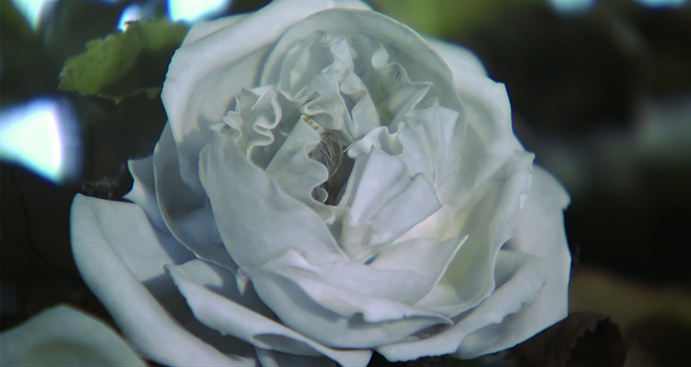 |
Meissen Porcelain Petal
Ludwig’s theatrical tricks are also displayed in the dining room. In the dining room, a small table fit for less than four people, was actually only for himself. If the king wanted to be left alone to dine in solitude, a wishing table, as it's called, descends onto the floor. The King can sit there dining and not to be disturbed by servants coming and going. Of course downstairs, there are pieces of the late 19th-century hi-tech engineering that operated the table.
Obsessed with beauty in architecture and art, Ludwig seemed like he had no interest in matters of state. More importantly, he had run up enormous debts. The cabinet faced with such a king, decided to act. On June 12th 1886, a government commission placed the King in custody and declared his uncle the regent. Ludwig was transferred to a castle on the shores of Lake Starnberg near Munich and placed under house arrest. He had lost his kingdom and perhaps more importantly, his beloved palaces.
Soon after his removal, Ludwig went for a walk with his psychiatrist along the shore of the nearby lake. Neither man returned. After hours of searching, the bodies of the two were found on the edge of the lake. The body of Ludwig showed no signs of obvious injury, but the body of the doctor showed evidence of a violent struggle. The King's final moments have been the subject of debate until today. Was it an accident? Or was the king murdered?
No matter what happened that day, under the sponsorship of Ludwig, there was a blossoming of the arts in Bavaria. Although the King’s end was miserable, his castles brilliantly remain. The dreamlands built by Ludwig, only for himself, are now German part of heritage and the world shares its ultimate beauty.
Yoo Dayoung yooda0316@gmail.com
<저작권자 © 홍익대영자신문사, 무단 전재 및 재배포 금지>


